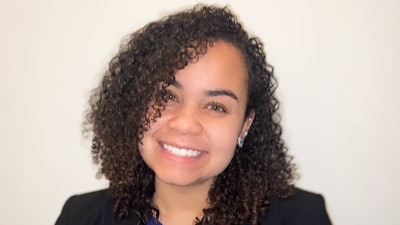How many times have you seen something about “ways to increase students’ sense of belongingness lately”? I see it everywhere, especially within higher education. We have finally come to the conclusion that the way that higher education institutions make people feel matters. Sense of belongingness has been found to impact everything from academic success to graduation rate. Many people, such as I, focus on working to create a safe space to allow students to truly feel like themselves and be able to thrive. But how do we do that?
What if we could increase their sense of belongingness through a few tangible steps? Sense of belongingness is needed, and it requires feeling like you feel safe and confident in your identity. Many factors such as the Black Sheep Effect and Token Status may make certain students feel like they do not belong because they are a part of a minority. This can be any minority, maybe your student is the only person in their family who wanted to study science instead of art. Maybe your student is the only person in their family to ever make it to college and they feel alone. Maybe the student has come from an area with less access to resources and didn’t learn the same material as everyone else, so they aren’t as prepared and feel it every day. Whatever it is, those things may not be able to change and students may have a negative perception of themselves due to their surroundings and experience.  Taziah Kenney
Taziah Kenney
What if the first way to increase a sense of belongingness is to help the student positively look at themselves through a strengths-based approach? There are five steps that can be incorporated into your space to increase a sense of belongingness. First, you must identify strengths and behavioral factors of yourself and the students. It is just as important for you to know your strengths as a leader and walk confidently in them as it is for you to help the students find their strengths. How can you do this? Well, you can have them do a reflection exercise or you can do something tangible like have them take a strengths assessment.
Then, you should individualize your teaching and educational practices to help the students continue to develop their strengths. Maybe this means finding out that your students prefer presentations to quizzes every week. It may mean having them draw concept maps instead of taking written notes. Or, it could be having them go into their community to tutor some high school kids to increase their verbal communication and leadership skills.
Next, you must help connect the students with people in their lives to develop their strengths. It is so important that students have meaningful relationships with faculty and peers that support them and help guide them through real-life preparation. Further, many students are starting to realize that is more important for a faculty member to try to understand and engage with their experience than to have the same one as them. Overall, some people don’t have support and it may contribute to decreases in success.
Education can become the act of “drawing out” student’s strengths and helping them to develop if we use a strength-based approach. One easy way to do this is by having students do peer-to-peer editing and group assignments where students can encourage each other. Another way can be having students reflect on their strengths and how they can use them in a way to impact themselves and others.
Lastly, there must be a proactive search for ways for the student to use these strengths and skills such as through extracurricular activities, mentorship, and volunteer opportunities. We want to make sure that students bring their strengths they develop inside the institution outside the institution. Isn’t that what higher education is really about? Making the community better. Trying to increase a sense of belongingness does us no good if a student doesn’t know who they are. Let’s be catalysts to helping students to find their strengths and walk in them to increase their success inside and outside of the classroom.
Taziah Kenney is a doctoral candidate at Widener University.















